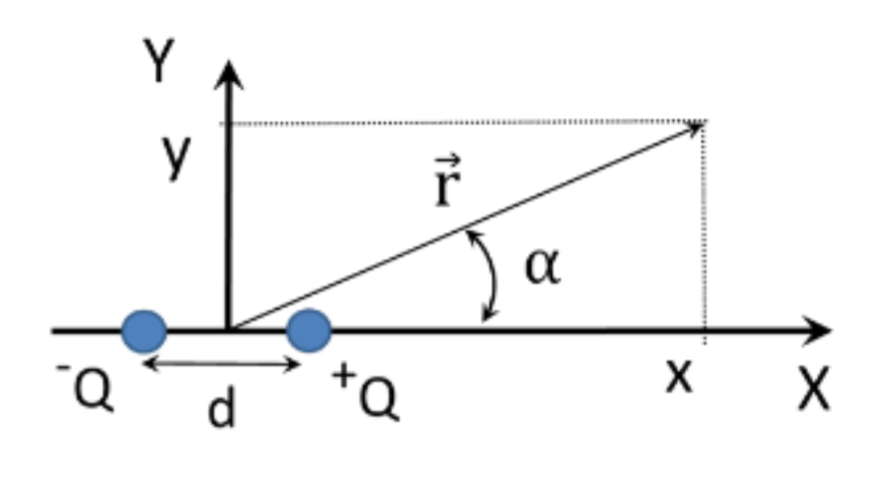The electric potential at large distances from the dipole (i.e. ligand >> d) is described by the relationship V (r, α) = kQ? ∙ cosα?2, where d is the distance between the charges of the dipole and r is the distance from the dipole center. In the Cartesian system whose beginning is halfway between the charges of the dipole, and the axis of the dipole is the X axis (see figure), and limited to the two-dimensional case, the given relationship is as follows: V (x, y) = k ∙ Q? ∙ x / (x2 + y2) 3/2 Using this relationship, determine the coordinates of the electric field intensity vector at the point with the coordinates P = (R, R), i.e. at any point lying on the straight line lying at the angle α = π / 4 at a distance of √2 ∙ R from the origin of the coordinate system, at a large distance from the origin coordinate system.
The electric potential at large distances from the dipole (i.e. ligand >> d) is described by the relationship V (r, α) = kQ? ∙ cosα?2, where d is the distance between the charges of the dipole and r is the distance from the dipole center. In the Cartesian system whose beginning is halfway between the charges of the dipole, and the axis of the dipole is the X axis (see figure), and limited to the two-dimensional case, the given relationship is as follows:
V (x, y) = k ∙ Q? ∙ x / (x2 + y2) 3/2
Using this relationship, determine the coordinates of the electric field intensity vector at the point with the coordinates P = (R, R), i.e. at any point lying on the straight line lying at the angle α = π / 4 at a distance of √2 ∙ R from the origin of the coordinate system, at a large distance from the origin coordinate system.

Step by step
Solved in 2 steps with 4 images




